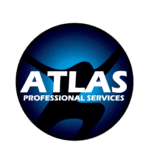Plan to Succeed When Rolling Out New Technology in the Workplace
Oftentimes, CEOs, CIOs and other executives are reluctant to roll out new technology in the workplace because they’re not sure how their staff will react. However, organizations must continuously evolve their IT systems to take advantage of opportunities for streamlining processes with automation, improving cybersecurity protection and connecting teams better.
So, what are the challenges leaders face related to employees when rolling out new technology in the office? And how can they overcome them?
Simply put, much of the trouble arises from lack of understanding and involvement among staff. And much of the solution boils down to effective two-way communication and working with a supportive, experienced IT team.
Why Employees Resist New Technology
There are many reasons employees may resist or show apathy about adopting new technology. These can include:
- Concerns that the tool will make more work for them, or will make work more difficult for them
- Belief that the new technology won’t be around for very long
- Worries that tech focused on streamlining processes with automation could make their jobs obsolete
- Concern they won’t receive the training and support needed to learn the new technology
Therefore, it’s important that business executives understand why staff members aren’t enthusiastically embracing new technology. That way, they can determine how to shape future conversations.
Here are a few tips to make a new tech rollout a more seamless and less painful process:
Tip 1: Involve Staff Prior to Rolling Out New Technology
A key to a successful rollout is to involve staff before any decisions are made about the new technology. This will allow leadership to gain insight into their team’s thoughts and opinions. And, it allows an opportunity for the team to feel heard, with their input taken into account during the decision-making process. This often helps with the buy-in process down the line.
For example, surveys, focus groups and town hall meetings can be a great way to gather staff’s input on the technology they feel they need to do their jobs better. It’s also helpful for leaders to share features and benefits of products, then allow staff to ask questions and offer suggestions on what they think would be valuable. Leaders can also take note of potential push-back or reluctance staff is showing, to address later.
This is not to say that executives need to use every suggestion their staff shares. However, offering avenues for two-way communication can be valuable for both the organization, the staff and, ultimately, the success of the rollout.
Tip 2: Focus on What’s in it for Them
Again, communication is key leading up to and during the rollout of new technology in the workplace. A key message to communicate during this time is how learning and using the new technology will benefit staff.
Whether the new tech offers opportunities for streamlining processes with automation, improving cybersecurity protection or connecting teams better, highlight specifically what the product means for employees. Will it save them time? Improve accuracy? Simplify a cumbersome process? Make the value of the tool very obvious.
In addition, consider positioning learning the new product as a chance for upskilling. Employees know they need to keep their skills sharp. Training on how to use cutting-edge technology is an opportunity for staff to receive valuable professional development that will pay off in the future.
Keep in mind that different employees will have different motivations and styles for learning new technology. Some may want to learn quickly, while others may need more time. Leaders who understand each person’s learning style and source of any potential reluctance can better address them for a successful adoption.
Tip 3: Work with an IT team that can help minimize disruption and accelerate adoption
When considering the actual transition to a new tech product, working with the right IT partner can make all the difference.
Whether it’s your in-house IT department or a managed service provider (MSP) like Atlas, a strong IT team can help executives tasked with managing tech to smoothly navigate these transitions.
“We know business leaders are concerned about how their staff will react to new tech,” said Kristin Johnson, Market Development Director at Atlas. “That’s why our team is focused on making these transitions as easy as possible for all our clients. We frequently talk to C-suites and boards about how we can help minimize the impact and support a smooth process for rolling out new products to best protect their organization.”
An experienced, hands-on IT team partner will have a strong understanding of how to support the organization when rolling out new tech. This includes offering guidance and resources on how to train and support employees expected to use it. For example, we offer service manuals, training, continuous support and more to help organizations transition to new tech products.
Is your organization reluctant to upgrade technology because you’re concerned about how employees will react? Contact us today, and we’ll share how we can support you in directing IT changes at your organization.





